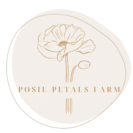 Best Flowers to Attract Bees to Your Garden
Best Flowers to Attract Bees to Your Garden
If you’re passionate about gardening, there’s a good chance you appreciate the vital role bees play in keeping our ecosystems healthy. Not only do bees help pollinate flowering plants, but they’re also crucial in increasing the yield of fruits and vegetables in your garden. Encouraging bees to visit your garden can lead to healthier plants, more abundant harvests, and the joy of supporting pollinator populations that are facing unprecedented challenges.
In this post, we’ll explore some of the best flowers to attract bees to your garden. We’ll also cover why attracting bees is beneficial, and offer tips on when these flowers bloom, their growing conditions, and whether they’re annuals or perennials.
Why Attract Bees to Your Garden?
Bees are among the most efficient pollinators in the natural world. When you grow vegetables such as tomatoes, cucumbers, squash, and peppers, you rely on pollinators to transfer pollen from flower to flower. Without this process, many vegetables would not form fruit.
By attracting bees to your garden, you’re encouraging more frequent and effective pollination. This can lead to:
-
Higher vegetable and fruit yields
-
More robust and uniform crops
-
A more vibrant and biodiverse garden
Supporting bee populations also contributes to global environmental health. Many bee species are in decline due to habitat loss, pesticide use, and climate change. Your garden can become a small sanctuary that supports their survival.
 Best Flowers to Attract Bees
Best Flowers to Attract Bees
Here are some beautiful, bee-friendly blooms to consider planting in your garden:
1. Lavender (Perennial)
-
Bloom Time: Late spring through summer
-
Growing Conditions: Full sun, well-drained soil
-
Why Bees Love It: Lavender’s strong fragrance and abundance of nectar-rich flowers make it a top choice for attracting bees.
2. Borage (Annual)
-
Bloom Time: Late spring to early fall
-
Growing Conditions: Full sun to partial shade; adaptable to most soils
-
Why Bees Love It: Borage is known as a bee magnet. Its star-shaped blue flowers replenish nectar rapidly.
3. Echinacea (Coneflower) (Perennial) 
-
Bloom Time: Mid-summer to fall
-
Growing Conditions: Full sun, well-drained soil
-
Why Bees Love It: With vibrant petals and nectar-rich centers, echinacea is irresistible to bees and butterflies alike.
4. Sunflowers (Annual)
-
Bloom Time: Midsummer to early fall
-
Growing Conditions: Full sun, fertile and well-drained soil
-
Why Bees Love It: Sunflowers offer plentiful pollen and nectar. Their broad flower heads make for easy landing. They are so easy to grow too!
5. Bee Balm (Perennial)
-
Bloom Time: Mid to late summer
-
Growing Conditions: Full sun to partial shade; prefers moist, rich soil
-
Why Bees Love It: As the name suggests, bee balm is a favorite among pollinators, especially bumblebees.
6. Cosmos (Annual)
-
Bloom Time: Summer to first frost
-
Growing Conditions: Full sun; thrives in poor soil
-
Why Bees Love It: Cosmos flowers produce nectar and pollen all season long with minimal care.
7. Black-eyed Susan (Rudbeckia) (Perennial)
-
Bloom Time: Summer through early fall
-
Growing Conditions: Full sun; drought-tolerant
-
Why Bees Love It: Bright petals and dark centers make it highly attractive and rewarding for bees.
8. Zinnias (Annual)
-
Bloom Time: Early summer until frost
-
Growing Conditions: Full sun, well-drained soil
-
Why Bees Love It: Zinnias are easy to grow and packed with nectar in a variety of colors.
9. Thyme (Perennial herb)
-
Bloom Time: Late spring to summer
-
Growing Conditions: Full sun, well-drained soil
-
Why Bees Love It: Small but nectar-rich flowers that are also great for your kitchen garden.
10. Crocus (Perennial bulb)
-
Bloom Time: Early spring
-
Growing Conditions: Full sun to partial shade; well-drained soil
-
Why Bees Love It: One of the earliest sources of nectar when bees are emerging from hibernation.
 Tips for Creating a Bee-Friendly Garden
Tips for Creating a Bee-Friendly Garden
-
Choose a mix of bloom times: Ensure bees have a food source from early spring through late fall.
-
Avoid pesticides: Especially neonicotinoids, which are harmful to bees.
-
Plant in clusters: Helps bees forage more efficiently.
-
Provide water: A shallow dish with pebbles makes a great bee watering hole.
-
Offer shelter: Bare soil, bee houses, and undisturbed areas provide nesting sites.
My Final Thoughts
Inviting bees into your garden is one of the best things you can do to support nature while boosting your own vegetable and flower production. With a thoughtful selection of flowers, a few pollinator-friendly practices, and a little patience, your garden can become a vibrant haven not just for plants, but for the bees that help them thrive.
So go ahead—plant a few zinnias, scatter some borage seeds, or tuck in a lavender plant near your veggies. Your garden will thank you, and the bees surely will too.
Follow Along for More Gardening Inspiration
If you loved learning about bee-friendly flowers, I’d love to connect with you on Instagram! I share behind-the-scenes looks at my garden, flower-filled updates, and tips for creating a vibrant, pollinator-friendly outdoor space.
👉 Follow me on Instagram and join the growing community of garden lovers!


